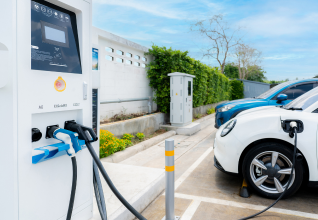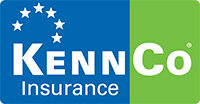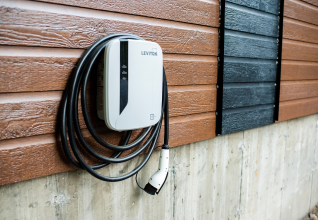As the adoption of electric vehicles (EVs) grows, public charging infrastructure is crucial in reducing range anxiety and making EV ownership more convenient. The number of public EV chargers in Ireland has been steadily increasing, offering users various charging options to suit their needs. This article will guide you through the process of how to use public EV chargers in Ireland and provide insights into charging etiquette and best practices.
Understanding EV Charging Types
Before diving into using public EV chargers, it’s important to understand the different types of charging available. EV charging has three main stages.

Level 1 Charging
Level 1 charging, slow or trickle, utilises a standard 120-volt household outlet. While it’s the slowest method, it’s also the most accessible, as you can charge anywhere with an available socket. However, this type of charging is generally more suitable for home use.
Level 2 Charging
Level 2 charging stations use a 240-volt supply, providing a faster charging rate than Level 1. These stations are commonly found in public places such as shopping centres, car parks, and workplaces. Depending on the EV’s battery capacity, it typically provides a full charge in 4 to 6 hours.
Level 3 (DC Fast Charging)
Level 3, or DC fast charging, is the fastest charging method available. These stations provide rapid charging speeds, allowing you to charge your EV to 80% in 30 minutes or less. However, they’re more expensive to install and maintain and less common than Level 2 chargers.
Finding EV Charging Stations in Ireland
Locating public EV charging stations in Ireland is simple, thanks to the various resources at your disposal:
Smartphone Apps
Several smartphone apps, such as Zap-Map, PlugShare, and ChargePoint, offer real-time information on charger locations, availability, and user feedback.
Websites
You can also find charging stations online through websites like the ESB’s eCars Charge Point Map or dedicated EV forums.
Onboard Navigation
Most modern EVs have onboard navigation systems to help you locate nearby.
Using an EV Charging Station
Once you’ve located a suitable charging station, follow these steps to charge your electric vehicle:
Initiating a Charge
- Ensure that your vehicle is parked correctly within the designated charging spot.
- Depending on the charging provider, you may need an app, RFID card, or contactless payment to initiate the charging process.
Connecting Your EV to the Charger
- Ensure that your vehicle’s charging port is unlocked.
- Remove the charging connector from the station and plug it into your vehicle’s charging port.
Monitoring the Charging Process
- Many charging stations have displays that show the charging progress and estimated time remaining.
- Your vehicle’s dashboard or mobile app may provide real-time charging updates.
Payment Options for EV Charging
Payment methods for public EV charging in Ireland vary depending on the provider. Most charging networks require users to create an account and link a payment method, such as a debit or credit card.
Some providers offer pay-as-you-go options that allow you to use contactless payment cards or smartphone wallets. Always check the payment options available at your chosen charging station to avoid any unexpected surprises.
Charging Etiquette and Best Practices
We recommend following basic charging etiquette when using public EV chargers:
- Use charging stations when necessary; don’t occupy a spot if your battery is nearly full.
- Don’t unplug someone else’s EV unless they’ve permitted you or left a note.
- Once your vehicle is fully charged, move it to free up the space for others.
- Use charging apps to report any issues with charging stations to help fellow EV drivers.
Charging at Home vs Public Charging
While public charging is essential for longer trips or when you’re away from home, most EV owners will rely primarily on home charging. Charging at home offers the convenience of charging overnight, ensuring your vehicle is ready for your daily commute. Installing a Level 2 charger at home can also provide faster charging speeds, reducing charging times.
Benefits of Public EV Charging
Public EV chargers offer numerous benefits, including:
- Reducing range anxiety, allowing you to travel longer distances with confidence.
- Providing a convenient charging solution when you’re away from home or unable to charge overnight.
- Enabling EV owners without access to home charging infrastructure to charge their vehicles.
Future of EV Charging Infrastructure in Ireland
Ireland has committed to expanding its EV charging network to accommodate the growing number of electric vehicles on the roads. As part of the Climate Action Plan, the government aims to increase the number of public chargers and improve charging station reliability. This expansion will make EV ownership more accessible and encourage electric vehicle adoption in Ireland.
FAQs
How much does it cost to use a public EV charger in Ireland?
Charging charges vary by provider, charging speed and vehicle battery capacity. Some stations charge for free, while others charge by kWh or hourly.
Can all electric vehicles use the same public charging stations?
Most public charging stations in Ireland use Type 2 plugs which are compatible with most electric vehicles in Europe. However, we always recommend checking your vehicle’s charging requirements and available ports at your charging station.

